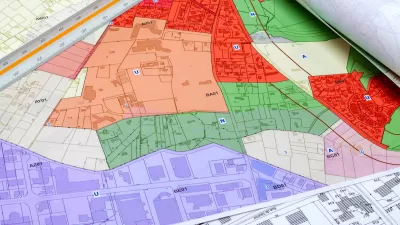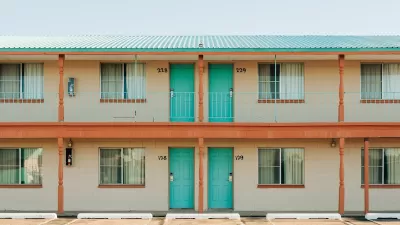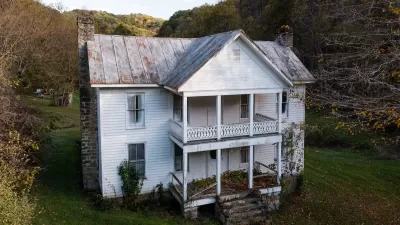Current zoning restrictions hearken back to an America that long longer exists. It’s time to update codes and stop perpetuating housing segregation and inequality.

Sara C. Bronin argues that outdated elements of zoning codes limit the kind of housing that communities across the country truly need. She points out that the way zoning laws define family—as people related through blood, marriage, or adoption ties—is one of the biggest problems:
The definition of family matters because zoning codes typically have a "one family per housing unit" policy. These policies are most strictly enforced in the neighborhoods with single-unit detached homes — 64 percent of neighborhoods, according to the 2013 American Housing Survey. It’s in these communities where housing affordability tends to be low, and racial segregation high.
As a result, zoning codes prohibit groups of people who want to cohabitate for any of a multitude of social or financial reasons, says Bronin. "In other words, the communal living arrangement in 'The Golden Girls' would be a zoning violation. (Dorothy and Sophia were related, but Blanche and Rose were not.)"
While progress has been made in some cities and states to recognize "functional families," much more change needs to happen, says Bronin. She urges presidential candidates to more directly address the issue and propose solutions in their housing plans.
"Championing this issue would promote progressive ideals. And it could unite both sides of the political aisle. Conservatives may come to realize that limited definitions of family erode property rights and freedom of association in the home," adds Bronin.
FULL STORY: The Golden Girls Would Violate Zoning Laws

Maui's Vacation Rental Debate Turns Ugly
Verbal attacks, misinformation campaigns and fistfights plague a high-stakes debate to convert thousands of vacation rentals into long-term housing.

Planetizen Federal Action Tracker
A weekly monitor of how Trump’s orders and actions are impacting planners and planning in America.

In Urban Planning, AI Prompting Could be the New Design Thinking
Creativity has long been key to great urban design. What if we see AI as our new creative partner?

How Trump's HUD Budget Proposal Would Harm Homelessness Response
Experts say the change to the HUD budget would make it more difficult to identify people who are homeless and connect them with services, and to prevent homelessness.

The Vast Potential of the Right-of-Way
One writer argues that the space between two building faces is the most important element of the built environment.

Florida Seniors Face Rising Homelessness Risk
High housing costs are pushing more seniors, many of them on a fixed income, into homelessness.
Urban Design for Planners 1: Software Tools
This six-course series explores essential urban design concepts using open source software and equips planners with the tools they need to participate fully in the urban design process.
Planning for Universal Design
Learn the tools for implementing Universal Design in planning regulations.
Gallatin County Department of Planning & Community Development
Heyer Gruel & Associates PA
JM Goldson LLC
City of Camden Redevelopment Agency
City of Astoria
Transportation Research & Education Center (TREC) at Portland State University
Jefferson Parish Government
Camden Redevelopment Agency
City of Claremont





























